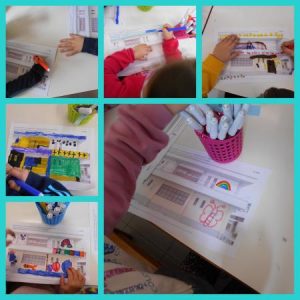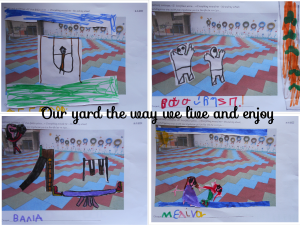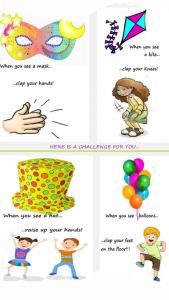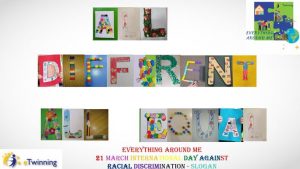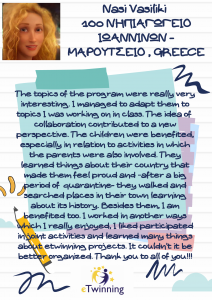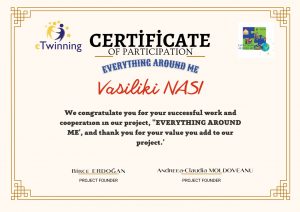Me and my family
a. Inspired by “Come with me” by McGhee M. Holly
“When the news reports are flooded with tales of hatred and fear, a girl asks her papa what she can do to make the world a better place. “Come with me,” he says. Hand-in-hand, they walk to the subway, tipping their hats to those they meet. The next day, the girl asks her mama what she can do–her mama says, “Come with me,” and together they set out for the grocery, because one person doesn’t represent an entire race or the people of a land. After dinner that night, the little girl asks if she can do something of her own–walk the dog . . . and her parents let her go. “Come with me,” the girl tells the boy across the hall. Walking together, one step at a time, the girl and the boy begin to see that as small and insignificant as their part may seem, it matters to the world…”
We draw with our parents something that makes us happy….
b. Inspired by the work of artist Zo Sanadi «family», 2019
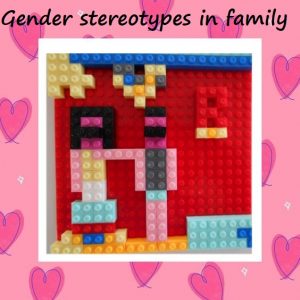 c.We talked about gender equality of rights and obligations and compared a picture in a greek school book of past with our experience of present …
c.We talked about gender equality of rights and obligations and compared a picture in a greek school book of past with our experience of present …
…and changed what we didn’t like. Their conclusion was that “If dad and the boy shared the chores with mom, they would all had a good time together” 
And as, respect for the others starts from the childhood, an advertisement for tea titled “Being – A boy who girls love” helped kids to understand the meaning of sharing and respect regardless of gender…
d. Self-introduction of children with online meeting
Me and my school
a. We walked around the building, we observed it and took photos. We thought that we prefer brighter walls and we were dissapointed because some people insist on smudging walls. So, we decided to make some changes…
 b.Camera has become a necessity for us. Our yard became the second object of our interest. We took photos and then kids draw seesaws, swings, balls, basketballs, plants to show the way they live and enjoy yard.
b.Camera has become a necessity for us. Our yard became the second object of our interest. We took photos and then kids draw seesaws, swings, balls, basketballs, plants to show the way they live and enjoy yard.
c. Dance party (Collaboration activity)
As it was a carnival period we had a party at school. Kids were dressed up their costumes and danced traditional dances, like “Gaitanaki” -Colours, fun and humor are knitted together with the ribbons in a dance of love and reconciliation with special symbolism.
The number of twelve dancers is said to indicate the alternating months of the year . In many societies, especially rural ones, the carousel symbolizes unity and camaraderie. The dance symbolizes the cycle of life, from life to death, from sadness to joy, from winter to spring…
They danced “How do they grind the pepper” – traditional dance of our place. This is a universally-known song, a distinguishing mark of every feast of Carnival, perfectly combines magical and comical attributes, evoking abundant laughter and good spirits. The song accompanies a slow men’s dance “in three,” wherein the steps alternate with ritual movements of pantomime as a group. Kids grind the pepper with their knee, nose, bottom…
Finally they made their dance – challenge for you. They invite you to see the symbol and make the appropriate moves…
Me and my neighbourhood
b. Inspired by “Los capybaras ” _“ΟΙ ΞΕΝΟΙ” του του Αλφρέντο Σοντεργκίτ (Εκδ.Μεταίχμιο)
“Hens and their chicks love their warm, snug home. Life is simple and comfortable in the chicken coop, where everyone knows their place and worries are far away.
Until one day, when the capybaras appear.
To the hens, the capybaras are too big, too wet, and too hairy. They don’t even follow the rules! But it’s hunting season, and the capybaras need somewhere safe to hide. Can the hens learn to get along with their unexpected guests?
This delightful story shares the importance of opening our hearts to each other, no matter our differences, and the marvelous surprises that can happen along the way.”
“My maternal grandparents lived in a housing complex, a multifamily as they are called in some places. They were old houses, the legacy of a prosperous Uruguay that took care of the dignity of the working class and was called “the Switzerland of America”. But that Uruguay no longer existed when I was born and some pieces of that structure were falling apart, we were in a dictatorship and the feeling, with the perspective of time, was of perpetual and slow precariousness, a silent litany of needs. My grandparents were poor, but some of their neighbors were even poorer and those people were called “capinchos” (thus without the r). Very poor people discriminated against by people a little less poor. It was a situation completely naturalized by all the inhabitants of that neighborhood. The parents of the capinchos had been capinchos and their children were also capinchos. At the age of seven or eight, it was difficult for me to understand that invisible but insurmountable barrier that separated me from them.”
(From a writer’s interview at : https://cuatrogatos.org/blog/?p=7993 )
c.
d. A different walk…
e. A beebot walks to school, playground, fishmonger, pharmacy…
f. Collaboration activity
Me and my city
b. Collaboratin activity : My city’s historical and natural beauty calendar…
When it starts raining in Ioannina isn’t easy to stop. Ioannina is colourful in October especially when you walk across the lake and say “Goodmorning” to small island’s inhabitants …
Me and my country
a. After we wrote the name of our country, we made pictures of each letter…
b. …and we tried to make Greece’s map…
c. “For us, Greece is these lands burned in the sun and these blue seas with the foam of the waves. They are the brunette or auburn girls, they are the whitewashed white houses and the taverns and the songs at night with the moon by the sea or under a plane tree. They are our fathers and grandfathers with the rifle in their hands, the ones who liberated our homeland and further back, older, all our ancestors who also had only one in mind – like us today: the struggle for freedom.” From the speech of Odysseus Elytis to the Greeks of Sweden after the awarding of the Nobel Prizes
Except being poet, he liked painting and creating collages.
Painting is silent poetry, poetry is talking painting, says Plato. Plato’s saying finds full application in the poetic work of Odysseus Elytis. The painter himself knows very well the value of colors which he conveys in his poetry, opening the “palette” of words in a colorful feast of speech, image and colors.
So, his art inspires us…
“If you disintegrate Greece, in the end you will see that you are left with an olive tree, a vineyard and a boat. Which means: with so much more you can rebuild it. “
d.
A young girl visits Acropolis Museum, finds Karytids nad tells you Greek words. She says “Goodmorning from Acropolis museum. I am with Karyatids and tell some words that remind Greece: Olive (Ελιά), vineyard (Αμπέλι), sea (Θάλασσα), sun(Ήλιος) , hospitality (Φιλοξενία)
How are these words called in your language?
https://www.voki.com/presenter/pickup?vpId=1986712&md5VpId=279e672eb3d08b2c85be27be3f741508
e. Collaborative activity : making a dictionary
https://www.storyjumper.com/book/read/130449862/624f329f82950
***21 March International Day Against Racial Discrimination – SLOGAN
Collaboration activity – each member of the project makes a letter for the slogan we voted it’s the best. Our letter was ‘A’. Letter Α was made by flowers. A garden is full of flowers of different colours, shapes and sizes. That is what makes garden unique and beautiful- the same with us -all different, all equal…
***Dissemination of the project
***Teachers project evaluation











